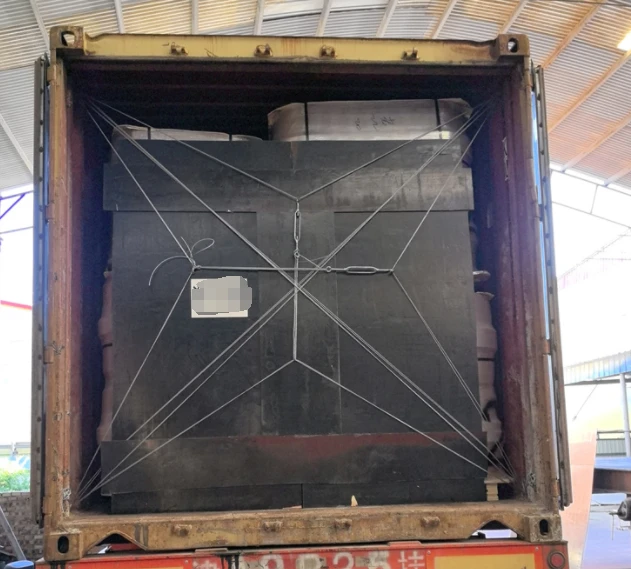Dec . 09, 2024 20:17 Back to list
Troubleshooting Stuck Brake Drum on Shoes Causes and Solutions
Understanding Brake Drum Stuck on Shoes Causes and Solutions
Brake systems are essential for the safety and performance of vehicles, and the brake drum system is no exception. While they are known for their reliability and efficient braking, issues can arise, including the frustrating problem of the brake drum getting stuck on the shoes. Understanding the causes and potential solutions to this issue can help drivers maintain their braking systems and ensure their safety on the road.
Causes of the Brake Drum Sticking
1. Rust and Corrosion One of the most common causes of a stuck brake drum is rust buildup. Over time, moisture can accumulate in the brake assembly, leading to corrosion on both the drum and the brake shoes. This can create a bond that makes it difficult to remove the drum when servicing the vehicle. Rust is particularly problematic in regions that use salt on roads during winter.
2. Improper Installation When brake components are installed incorrectly, it can lead to misalignment. If the brake shoes are not properly adjusted or are incorrectly positioned within the drum, they can inadvertently bind with the drum. This binding can create resistance that prevents the drum from being easily removed.
3. Worn Brake Shoes Brake shoes have a friction material that wears down over time. When they become excessively worn, they might not retract fully after the brake is released, causing them to maintain contact with the drum even when not engaged. This prolonged contact can result in a stuck drum.
4. Brake Dust Accumulation The accumulation of brake dust and debris can create a rough surface that increases friction between the shoes and the drum. This debris may prevent the drum from rotating freely and make it challenging to detach during maintenance.
5. Heat Expansion During heavy braking, the heat generated can cause the brake components to expand. If a vehicle is parked for an extended period after heavy use, the drum may cool down while still slightly expanded, making it stick to the shoes.
brake drum stuck on shoes

Solutions to Stuck Brake Drums
1. Inspection and Cleaning Regular maintenance is crucial. Inspect the drum and shoes for signs of rust, wear, or debris. If rust is present, clean the affected areas using a wire brush and brake cleaner. Ensuring that the brake assembly is free from dirt and grime can help prevent sticking.
2. Proper Installation and Adjustment When installing brake components, always follow manufacturer specifications and recommendations. Ensuring that the brake shoes are properly adjusted and aligned can help prevent them from sticking to the drum. If unsure about the installation process, consult a professional mechanic.
3. Replacing Worn Components If the brake shoes are worn beyond their usable limit, replacing them is essential. New shoes will ensure proper retraction and reduce the risk of sticking. Regular checks of brake components can help prevent unexpected failures.
4. Lubrication Using anti-seize lubricant on specific components (except on the friction surfaces) can reduce the chances of corrosion and sticking. However, exercise caution and ensure that lubrication does not come into contact with the brake pads or shoes, as this can compromise braking performance.
5. Professional Assistance If basic maintenance practices do not resolve the issue, it may be time to seek professional help. Skilled mechanics have the tools and experience to diagnose and fix complex braking issues safely.
Conclusion
A stuck brake drum can be a frustrating experience, but understanding its causes and implementing the appropriate solutions can mitigate this problem. Regular maintenance, proper installation, and timely replacements of worn components are crucial to ensure the reliable performance of a vehicle’s brake system. By taking preventative measures, drivers can enhance the longevity of their brakes and, more importantly, maintain their safety on the road.
-
Volvo Brake Drum: OEM Quality, Optimal Safety
NewsAug.27,2025
-
Durable Brake Drum MAZ for Heavy Duty Trucks | High Performance
NewsAug.26,2025
-
FUWA: Premium Quality, Reliable Performance & Innovative Solutions
NewsAug.25,2025
-
Liza Brake Drum: Superior Quality & Performance for Safe Driving
NewsAug.24,2025
-
Iveco Brake Drum | Premium OE Quality for Daily & Eurocargo
NewsAug.22,2025
-
Your Brake Drum Man: Quality & Performance Parts
NewsAug.21,2025
